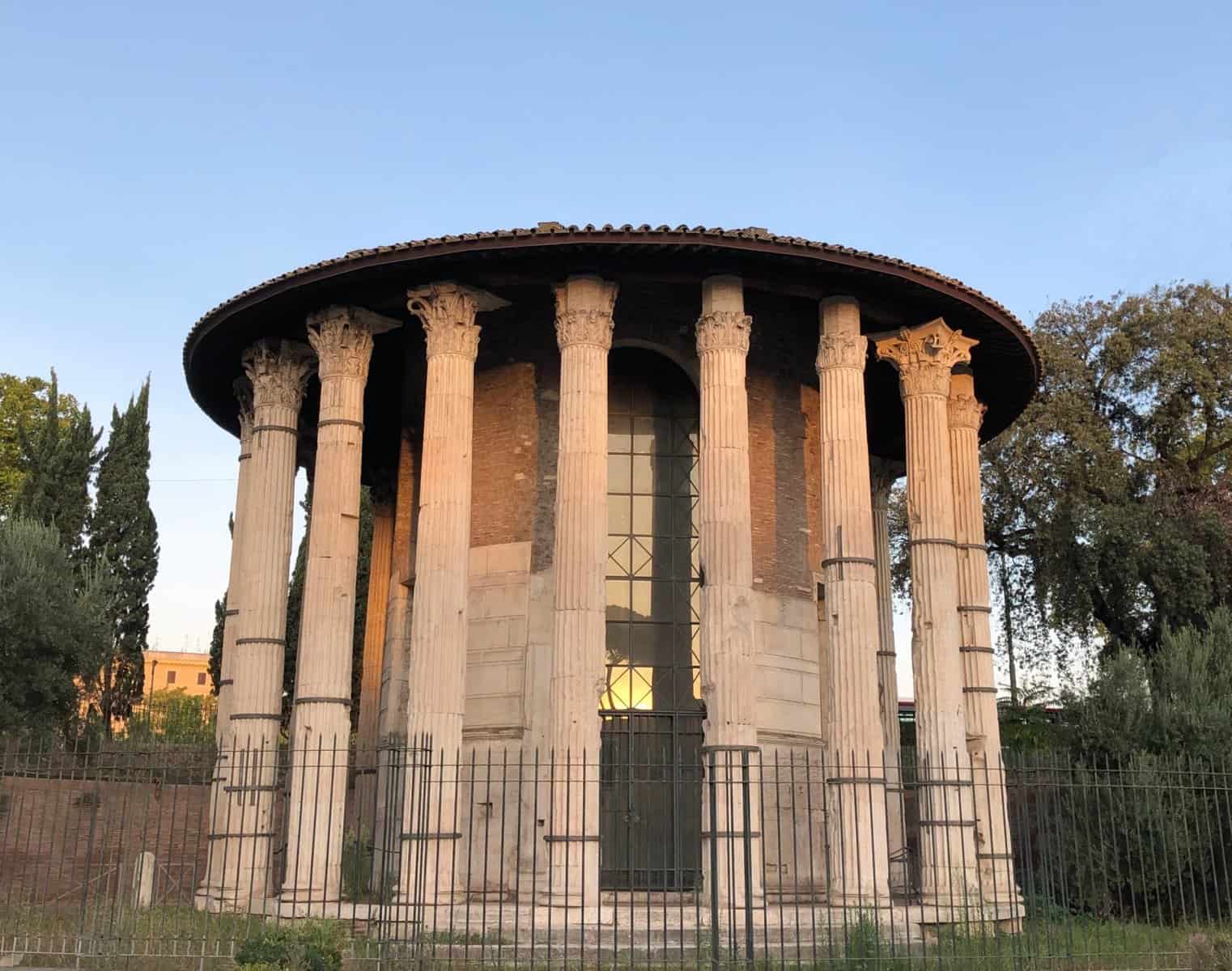Temple of Hercules Victor: The Oldest Building in Rome
The oldest building in Rome doesn’t call much attention to itself. For a culture which showed the world how to build big, it stands at a mere ten and a half meters. Instead of occupying a lofty hilltop or an illustrious avenue, it sits in the middle of an old cattle market. It doesn’t have any inscriptions proclaiming the glory of its patron. For centuries, it was confused with a different building entirely – and even today, its identification remains more theory than fact.
Yet the round structure in the Forum Boarium – now known as the Temple of Hercules Victor – has survived for over two thousand years. It’s a monument to Rome’s Republican years – before the megalomaniac emperors – and a tribute to the refinement of Greek culture. In a city where pomp and grandeur reigned supreme, this little building holds its own by virtue of its elegant lines. It’s also remained remarkably intact, even compared to Roman structures built hundreds of years later.

The temple hides in plain sight, by the river’s bank between the Circus Maximus and Tiber Island. We stumbled across it more than once without knowing what it was. It sits in the middle of the Forum Boarium, a park-like block at the foot of the Palatine Bridge. Across the street, busloads of tourists line up to see the Mouth of Truth, all of them seemingly unaware of one of Rome’s most remarkable structures.
The Round Temple in the Forum Boarium
Rome’s first set of docks, the Portus Tiberius, clustered around a flat area where the Capitoline, Palatine, and Aventine hills meet. The surrounding site grew into the Forum Boarium, a thriving market area where cattle and other goods entered the city. Trading activities in turn prompted the construction of temples where merchants could seek the gods’ blessing.

After much debate, most scholars now date the circular temple to the second century BCE. 19 of the original 20 columns survive, although about half the capitals were probably replaced in the first century. In spite of its diminutive size, the papacy ordered the temple consecrated as a church in 1140. Originally dedicated to Santo Stefano and later to Santa Maria del Sole, the structure picked up windows and some interior frescoes over the years. No one seems to know when the roof disappeared or what the original looked like.
Vestal Virgins famously worshipped in round temples, and for centuries most people assumed this one had been dedicated to goddess Vesta. By the time of Napoleon’s invasion, more excavations and written sources indicated Hercules instead. For more on Hercules in ancient Rome, see our post on the Forum Boarium.
A Roman Temple in the Greek Style

Other than its circular form, the temple’s most distinctive aspect is its pure Greek style, right down to its walls of solid marble imported from Attica. Most structures in Rome adapted Hellenistic architecture rather than copying it outright, especially when it came to using stone. Pragmatic Romans preferred to build with lightweight, locally-available materials like volcanic tufa and brick, limiting marble to a thin layer on top. The unusual and extravagant all-marble construction of the Temple of Hercules required labor-intensive carving for each and every piece.

Although scholars continue to debate the temple’s origins, one prominent theory links it with a second-century BCE general who conquered much of Greece. Lucius Mummius Achaicus served as both consul and censor – the most powerful positions of the Roman Republic – during years of intense construction in and around the Forum Boarium. Sponsoring a costly temple in the area would help him compete with his aristocratic co-censor and rival Scipio Aemilianus Africanus. Its Greek style would remind Romans of Mummius’ victory, right down to the Corinthian capitals evoking the city he sacked.
Renaissance Legacy


Renaissance architect Bramante’s iconic Tempietto was inspired by the Temple of Hercules Victor.
The round temple inspired many Renaissance architects, although they often added domes to their interpretations. Presumably they were unaware that the temple pre-dates Roman domes. Palladio’s sketch of the temple includes a dome, as does Bramante’s influential Tempietto in Trastevere.
Further Reading
Mary Beard’s SPQR: A History of Ancient Rome gives a concise but thought-provoking context.
For more on ancient Rome, see our posts:
A Guide to Ancient Architecture in Rome
The Forum Boarium, Rome’s Ancient Cattle Market
A Guide to Rome’s Ancient and Historic Bridges
Celio: Rome’s Best Neighborhood Hidden in Plain Sight
A Guide to Rome’s Ancient Churches and Basilicas
The Pantheon and the Domes of Rome
Historical Fiction Series: Europe From Ancient Rome to the Renaissance

